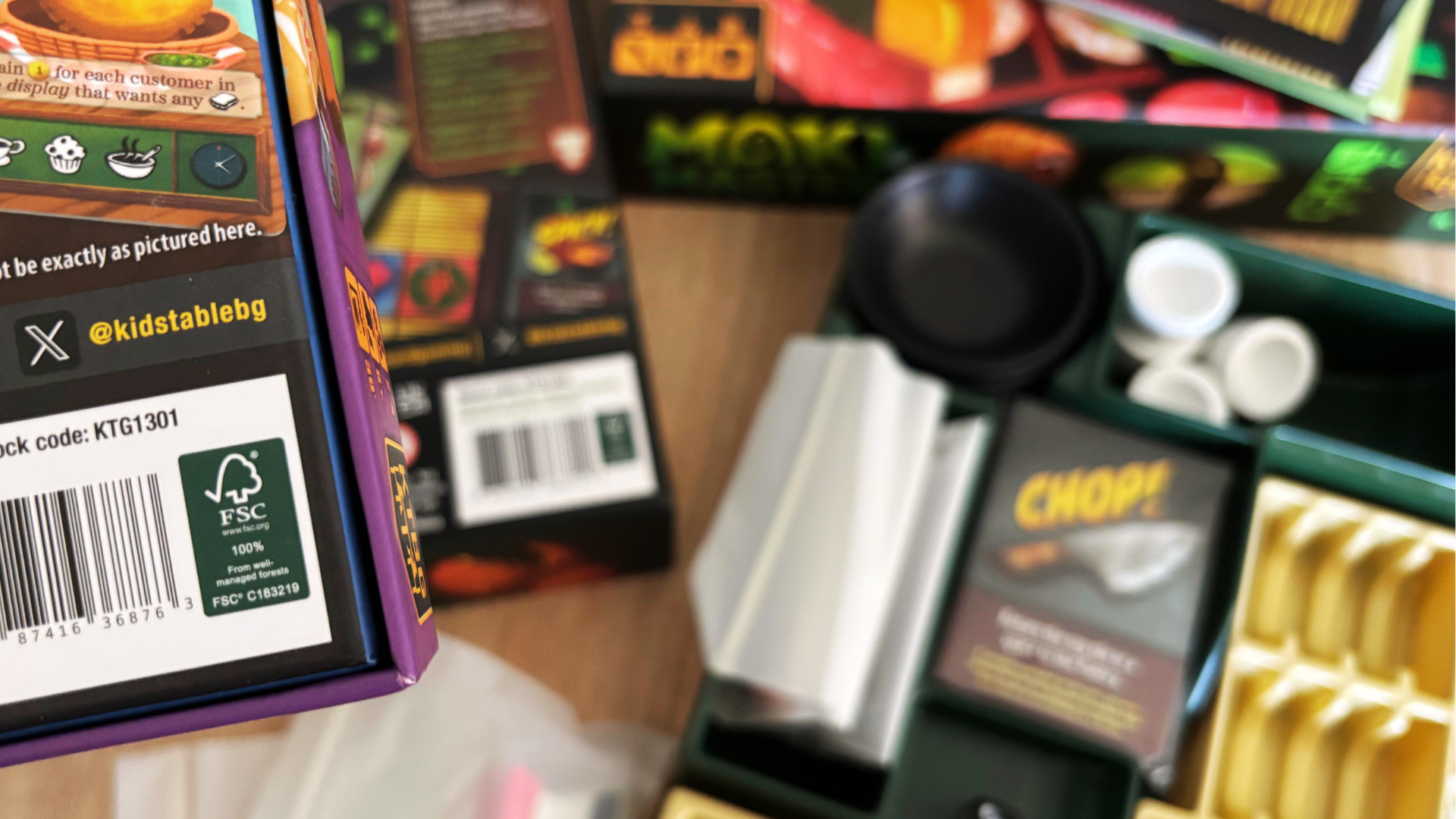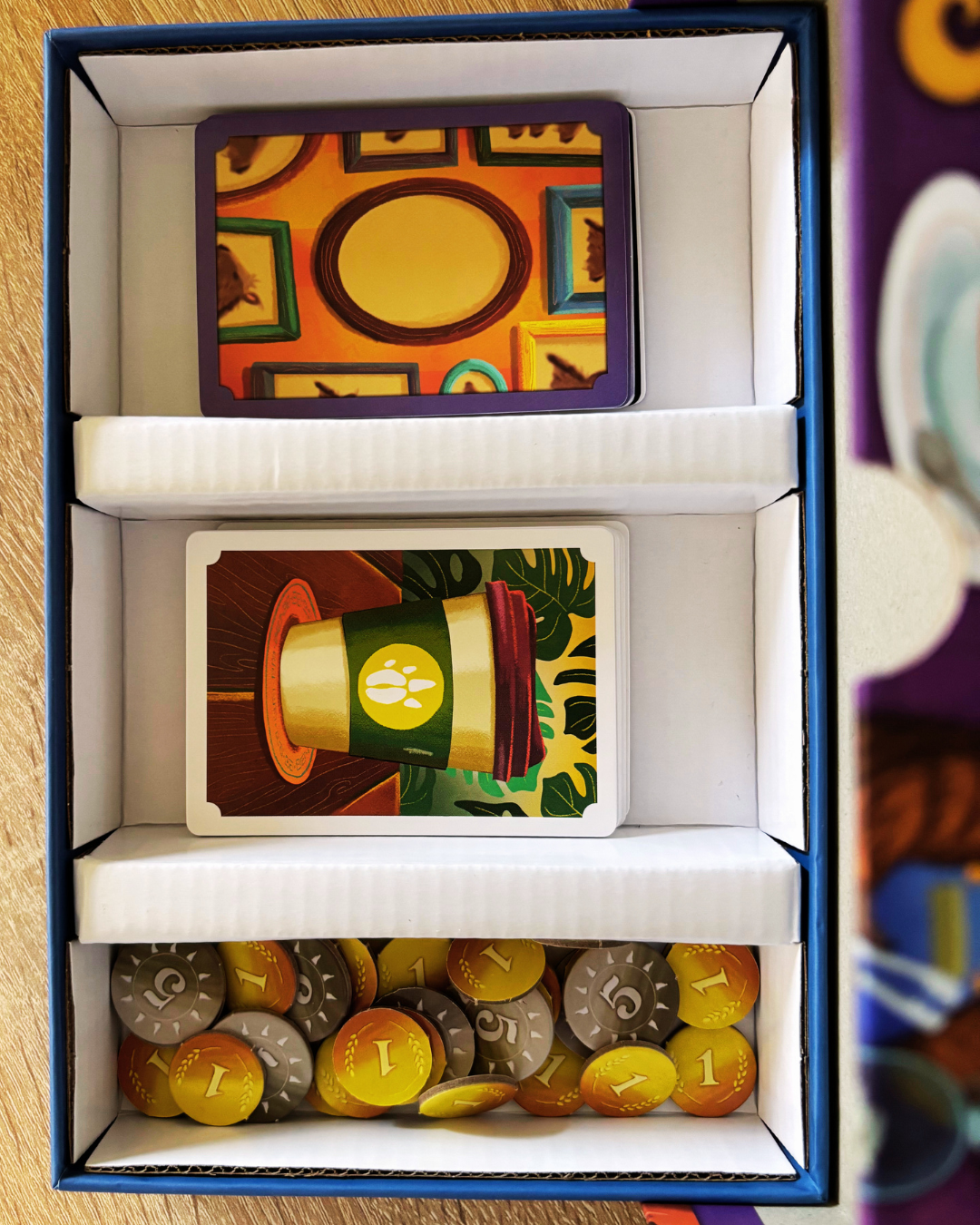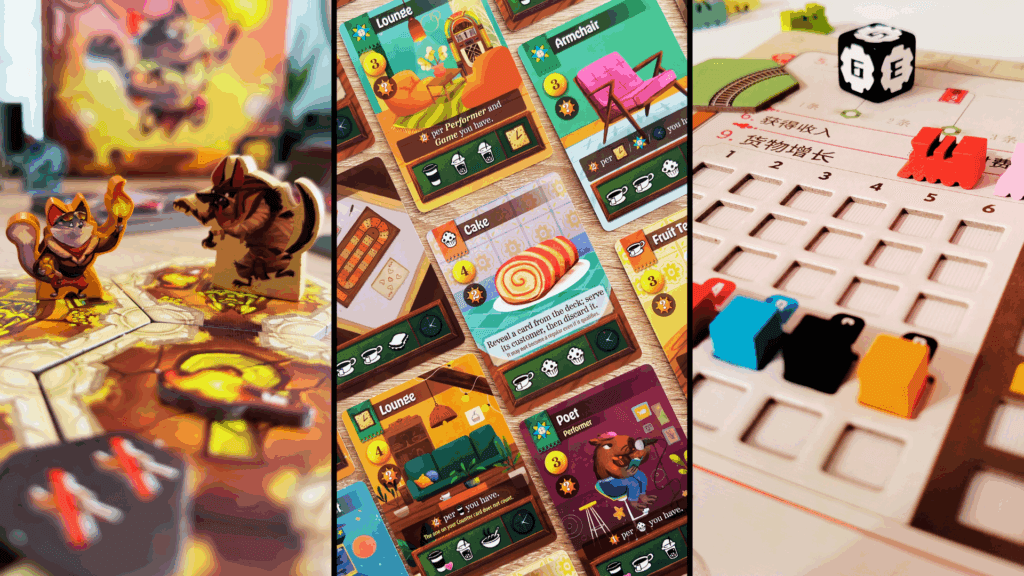

Dive into our insights for publishers & designers!


Date: 29/08/2025
Beyond the Box: Designing Sustainable and Functional Packaging for Board Games
In the world of board game manufacturing, the box is more than just a container: it’s the first impression, the brand ambassador, and the protector of the gameplay experience. But as the world shifts toward more sustainable practices, publishers and producers alike are reimagining what packaging can be.
We firmly believe that sustainable board game packaging is a design responsibility and a strategic asset. In this article, we explore how to create board game packaging that is both eco-friendly and functionally superior, balancing aesthetics, user experience, production efficiency, and environmental impact.
Why packaging is strategic
Modern board game packaging must balance four forces:
- Durability in shipping – prevent scuffs, corner crush, and internal rattle from factory to fulfillment. Standards like ISTA 3A simulate parcel drops, vibration and low-pressure transport so you can validate protection before mass print.
- Sustainability & compliance – the EU’s PPWR requires recyclable packaging and sets reduction targets (e.g., limits on empty space in e-commerce packs) while pushing recycled content and bans for certain single-use plastics. Designing now for recyclability and material minimization future-proofs your SKUs.
- Retail appeal – your box is a billboard. Finishes, color management, and layout must sell at 2 meters while staying recycling-friendly.
- Cost efficiency – smart dielines, mono-material choices, and cartonization often save more than they cost.
Why Sustainable Packaging Matters in Board Games
- Environmental Responsibility
Traditional game packaging often uses plastic inserts, laminated cardboard, shrink wrap, and foam – materials that are difficult to recycle and harmful to ecosystems. By reducing waste and choosing recyclable, biodegradable, or compostable materials, board game creators can significantly lower their environmental footprint. - Consumer Expectations
Today’s players are more conscious of sustainability. Eco-minded consumers actively seek out publishers and products aligned with their values. Sustainable packaging can turn casual players into loyal brand advocates. - Brand Differentiation
Packaging design communicates brand identity. Sustainable materials and clever design choices can help your product stand out – not just on shelves, but in values-driven marketplaces, crowdfunding campaigns, and game fairs.
Key Elements of Sustainable Board Game Packaging
Material Selection
- Recycled Cardboard: A sturdy, fully recyclable option for boxes and inserts.
- Paper-based Wraps & Seals: Replace shrink wrap with paper belly bands, tuck-in flaps, or eco-seals.
- Plant-based Inks: Use soy or algae-based inks for print clarity with reduced VOC emissions.
- Plastic-Free Inserts: Replace thermoformed plastic trays with die-cut cardboard or pulp molded fiber inserts.
Design for Compactness
Efficient packaging minimizes wasted space, reducing shipping costs, storage space, and carbon emissions from logistics. Designing “just-right” box sizes that still accommodate all components securely is both eco-conscious and cost-effective.
Modularity & Stackability
Modular packaging systems, where multiple titles in a series share uniform box sizes, simplify warehousing and increase shipping efficiency. Stackable, robust boxes also reduce product damage during transport.
Durability Without Overengineering
Sustainability doesn’t mean fragility. Smart engineering can result in durable boxes made of renewable materials that resist wear and tear, ensuring long product lifespans: a key tenet of sustainable design.

Common challenges and how to overcome them
Transitioning to sustainable board game packaging presents unique challenges, especially for publishers accustomed to traditional materials and industry standards. However, with thoughtful planning and collaboration with the right production partners, these challenges can become opportunities for innovation.
1. Perceived Fragility of Sustainable Materials
One concern with sustainable packaging is that recycled cardboard or paper inserts may not protect components as well as plastic trays. While these materials can be more sensitive to moisture or impact, smart structural design solves the issue. Reinforced folds, die-cut inserts, and layered compartments can ensure long-lasting protection. At Rawstone Games, we test all packaging for durability during stacking and shipping.
2. Higher Upfront Production Costs
Sustainable materials and certified sourcing (e.g., FSC) can increase initial production costs, especially for small print runs. However, compact and modular box designs can reduce shipping weight, save warehouse space, and even avoid certain tariffs. In many cases, eco-packaging also qualifies for green incentives or gains better visibility with retailers focused on sustainability.
3. Limited Access to Certified Suppliers
Not all manufacturers are experienced in eco-friendly solutions for games. This can make it harder for publishers to find the right partners. To address this, we work only with trusted, certified suppliers and continuously explore new materials to meet both environmental and production standards.
4. Retailer Resistance to Non-Wrapped Packaging
Some retailers expect shrink-wrapped boxes. To replace plastic, publishers can use paper belly bands, tamper-proof stickers, or recyclable seals — secure, compliant, and on-brand. These alternatives protect the game and signal sustainability at first glance.
Final Thoughts: Rethink the Box
At Rawstone, we’ve helped partners reduce up to 80% of plastic in their packaging without compromising on design or production efficiency. Our team works with FSC-certified suppliers and helps publishers rethink their packaging strategy from the prototype stage to mass production.
Designing sustainable board game packaging is not about sacrificing quality — it’s about evolving toward smarter, purpose-driven solutions. A well-designed package doesn’t just protect the product; it tells a story, reduces waste, and resonates with modern players.
Whether you’re an indie publisher, an established brand, or a game designer planning your first Kickstarter, it’s time to go beyond the box.
Stay in the Loop!
Want updates on market trends, sustainability best practices, and new manufacturing opportunities?
👉 Subscribe to our newsletter http://eepurl.com/g3LCXT
Get monthly insights, exclusive resources, and behind-the-scenes stories from our projects around the world.
you might also be interested...
How to Bring Board Games to China: Licensing, Localization, and Market Entry Strategies for Indie Publishers
Learn how to bring board games to China through expert localization, licensing strategy, and integrated manufacturing. A complete guide for...
> Read MoreBoard Games and Stress Relief | How Play Supports Wellbeing
Recent studies show that both board games and role-playing games can reduce stress, improve social connection, and support emotional wellbeing...
> Read MoreWhat Matters Most in Board Game Manufacturing: Cost, Quality, or Sustainability?
Discover how board game publishers weigh cost, quality, and sustainability when choosing a manufacturer.
> Read MoreFrom Worker Placement to Tile Placement: A Guide to the Most Popular Board Game Mechanics
Discover how to design sustainable board game packaging that’s eco-friendly, functional, and cost-effective!
> Read More



